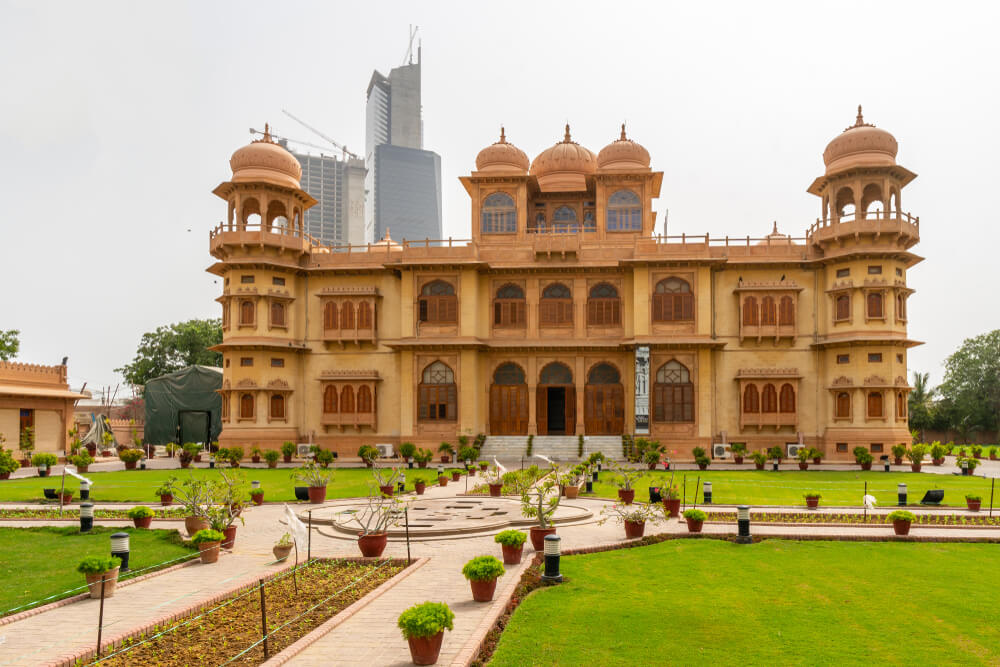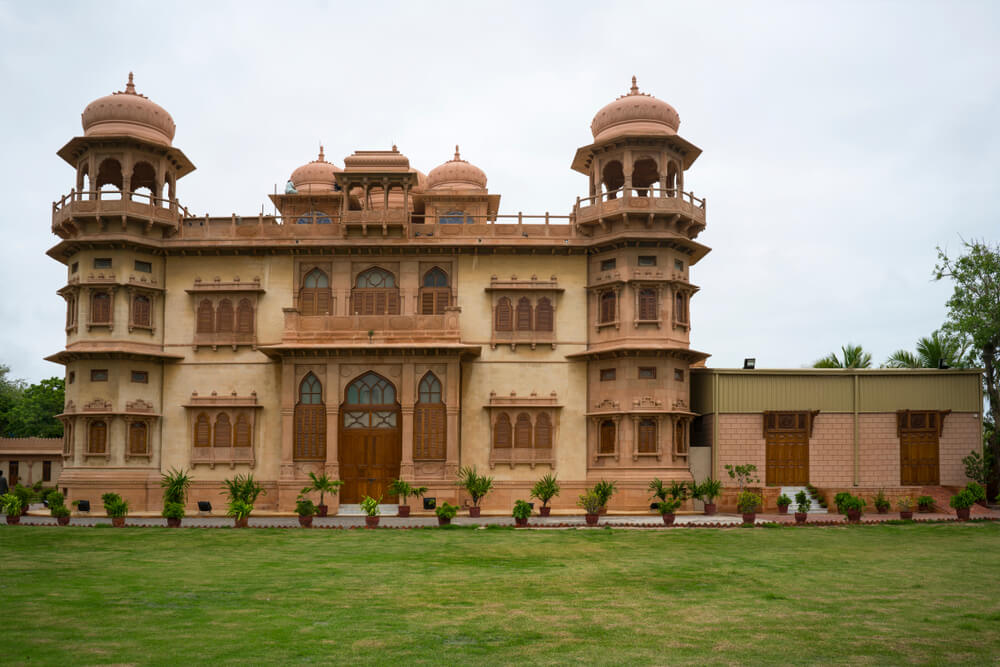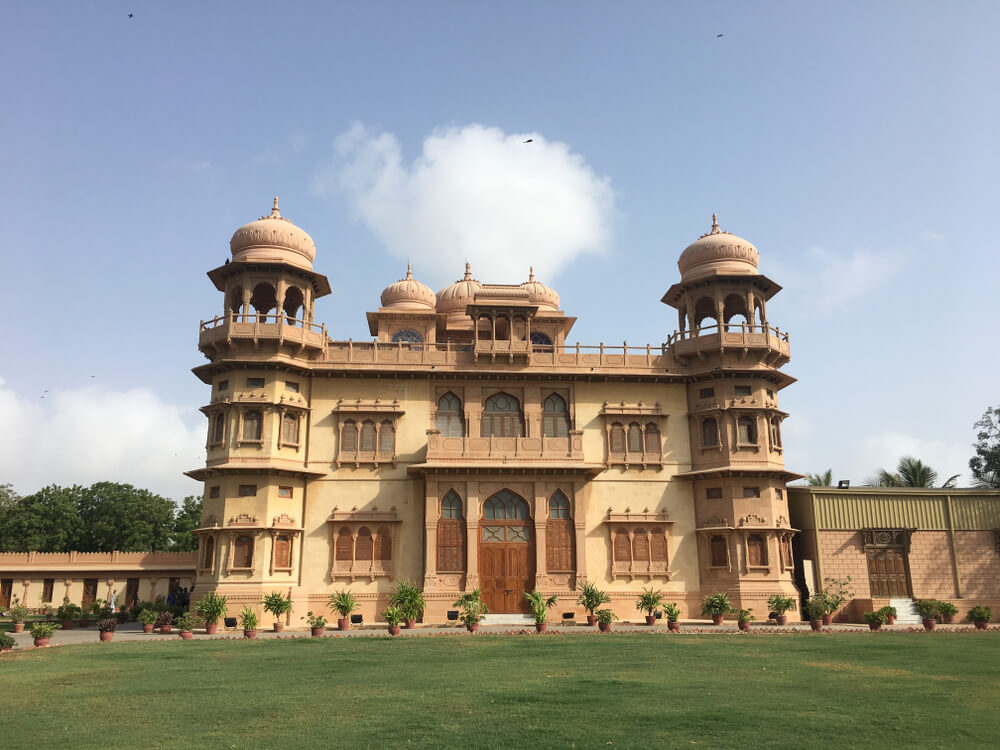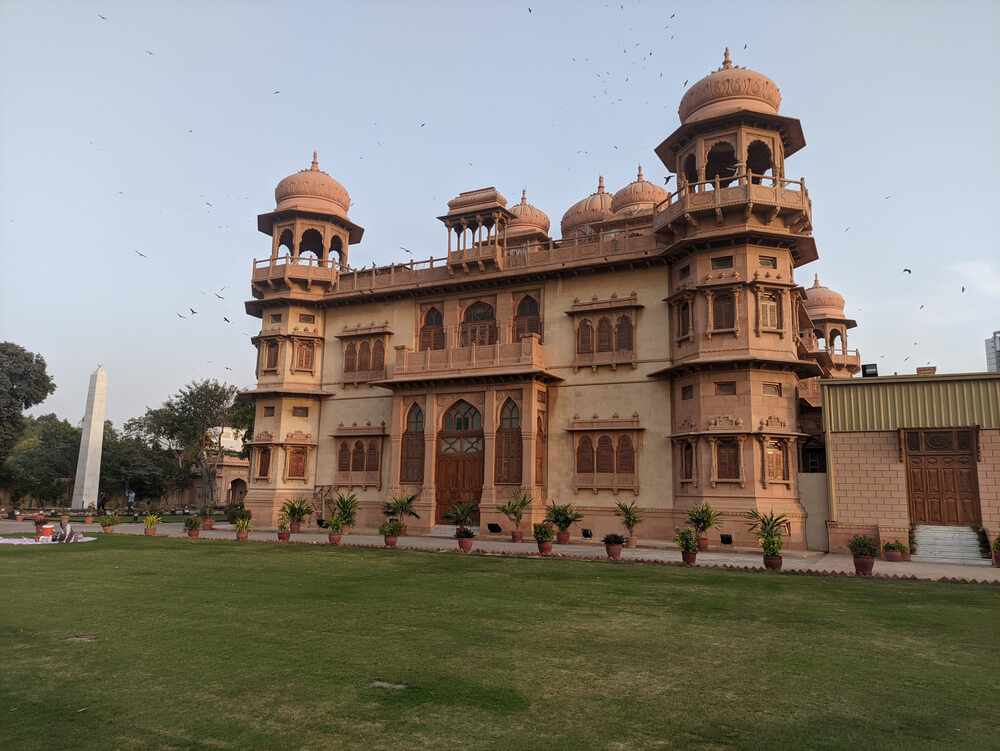Mohatta Palace Museum Karachi
Karachi is one of the most famous cities in Pakistan. It is also known as the city of lights. It is one of the busiest cities and has several sightseeing spots, museums, and monuments. Many buildings and monuments are kept intact from the pre-partition era. One of the most visited places is Mohatta Palace Museum. Due to its stunning architecture and historical importance, Mohatta Palace Karachi sees a large number of visitors every day.
Interesting Facts about Mohatta Palace
Mohatta palace was named after Shivratan Mohatta, and he was a famous businessman of his era. He made the Palace for his sick wife to cure her illness with refreshing seaside views. Mohatta palace is also known as Qasr e Fatima because it was known to be the property of Fatima Jinnah and a residential unit during her election campaign.

After the death of Fatima Jinnah, her sister used to live on the ground floor of Mohatta Palace. She lived there till 1980. After 1980, no one lived in the Palace or used it for any purpose. In 1995, Sindh Government asked Prime Minister for funds to purchase the building. 70 Lac was given for it, from which 61 lac was used to buy the building, and nine lace were used for its restoration. It was made open to the Public on 15 September 1999.
History of Mohatta Palace
A Businessman built Mohatta palace in 1927 and was a good friend of Quaid –i-Azam Muhammad Ali Jinnah. He made it for his sick wife as it is nearby the beach. After the partition, his family left the Mohatta Palace, and the Government of Pakistan decided to use it for government officials.
The Ministry of Foreign Affairs used it until Karachi was the country’s capital. Later Islamabad was made the capital of Pakistan.
Architecture Of Mohatta Palace
The total area of Mohatta Palace is about 18 000 square feet, divided into three floors, including the basement, ground floor, and first floor. Numerous rooms are furnished in true royal style. The basement has a staircase that leads to the pool with changing rooms. The rooms on the ground floor were used for entertainment because they were large and spacious. The first floor was set for private spaces. The domes of the Mohatta Place Museum are designed in a way to face each other diagonally.
The doors and windows of the Palace are an architectural wonder itself because of their intricate design. Mr. Agha Ahmed Hussain completes the interior of the Mohatta Palace Karachi. The whole design and décor of the place give off Mughal-era vibes. It is intricately adorned with Jodhpur pink stones and Gizri limestone. The stone walls and colorful tinted windows will leave its visitors mesmerized. The Mohatta Palace has always been the center of attention because of its unique architecture and design.

The original royal residence was constructed on 18,500 sq ft (1,720 m2). Its exterior is managed with windows, stone sections, spandrels, arches, balustrades with botanical themes, and stunning railings. There are nine vaults, with a middle vault in the center; the windows in the front part opening into the nursery are of blue tone, and those in the back region are curved windows with stained glass. The castle has huge impressive rooms intended for diversion on the ground floor and more confidential offices on the primary floor. A patio is furnished with shade from extraordinary daylight. The royal residence is exclusively comprised of teak wood with a finished flight of stairs, long passageways, and entryways opening inside entryways. The “barsati” (porch) of the Mohatta Palace had a lovely family sanctuary devoted to the Hindu God, master Shiva. The combination gave the royal residence an unmistakable presence in a beautiful area, portrayed by Indo-Saracenic engineering, which was found not a long way from the ocean.
Mohatta Palace was a luxurious home that was worked in the last part of the 1920s, comprising 18,500 sq ft (1,720 m2). The exquisite royal residence is based on various levels and was a late spring house for the Mohatta family for quite a long time before they left for India in 1947. There are three levels, storm cellar, ground floor, and first floor, till you arrive at the rooftop. The basement on the structure’s north side is tiny and contains a flight of stairs going downwards towards a boiling water pool chamber with an associated evolving room. They say it had a hot and cold water framework, which would supply the water to the pool. Close to the pool chamber are little ventilators, two on each side, which might have been utilized as a wellspring of daylight and letting out steam.
Insides of the Mohatta Palace
Once you enter the Mohatta Palace Museum, you will be fascinated by its Mughal-era design and beautiful architecture. Everything is arranged and designed to perfection. The interior leaves its onlookers fascinated by its beauty and aura. Several rooms are set up true to the Anglo-Indian Mughal era style. This takes you back to the Mughal era, and you feel like royalty while exploring the Palace.
After venturing inside the structure, a hall interfaces with each room arranged on the ground floor. The ground floor contains enormous masterful rooms intended for amusement, two towards the right half of the entry (north), two towards the left (south), and one at the back. The development inside the structure is through the incredible entry into an extensive passageway that goes around a spacious lobby with lavish roofs and a flight of stairs on the South side.
There is a substantial square lobby with seven openings driving into a passageway. The entrance is a datum, and the hallways are associated with the rooms where various exercises are held. On the south between the two rooms is a block of solid teak wood, a finished flight of stairs interfacing the ground floor and first floor.
On each side of the castle are octagonal pinnacles, which just two close to the front entry have winding flights of stairs that go up to the rooftop. At the far end, inverse the entrance, is a space for diversion, with a few steps on each side driving straightforwardly into the grounds at the castle’s rear.

When seen from the outside, the ground floor has two exceptionally resplendent windows on one or the other side of the entry comprising three screens each. Similar windows are on the north and south side, on one or the other side of the steps leading from the rooms to the grounds. The octagonal pinnacles have five windows each. Similarly, a distending chajja goes by and large around the ground floor to conceal.
The main floor has private offices, unlike the ground floor. This floor likewise has a huge lobby in the middle having ten entryways that open into the hall that outlines it on different sides (north and south) and intimate rooms on different sides (east and west). There are four enormous rooms with joined bathrooms and changing areas. The flight of stairs on the south finishes on this floor, passing on the way to the left, which interfaces with the octagonal pinnacle flight of stairs that paves the way to the rooftop. A comparative flight of stairs on the far edge paves the way to the rooftop. However, the excess two pinnacles stay disengaged, simply giving an outside view from the windows to each floor.
There are windows arranged right over the ones on the ground floor, giving a perspective on the immense grounds beneath. Likewise, there are three openings into the large porch on the top floor, which ignores the Arabian Sea. Additionally, the rooftop top may be the fascinating piece of the structure, giving a flying perspective on the encompassing area and the delightful arrangement underneath.
The housetop is associated with flights of stairs coming as far as possible up from the beginning through the front-facing north and south octagonal pinnacles. Chattris top the four octagonal models. In the standards, on both the north and south sides are petite three distributed, rectangular chattris. There are nine vaults, with a middle arch in the center and a more modest four vaults around it. This is marginally raised and resembles a room sitting above the housetop. It has steps on the north and south side, and the five arches are interconnected.
Mysterious Secrets of Palace
Many people have rumored and milled that Mohatta Palace is haunted, people explain several stories, but nothing is confirmed. Whenever there is such an old building, The stories about it being haunted come to the news.
Love Story Behind Mohatta Palace
Like the Taj Mahal was built by Mughal Emperor Shah Jahan, the Mohatta Palace Karachi was also built out of love. Mr. Mohatta built this Palace in the 1920s for his ailing wife, and he made this their summer house because of its proximity to Clifton beach. His wife had some severe illness, and doctors recommended her to take her somewhere refreshing where it has a lot of sea wind. He made this Palace for the love of his wife and to save her from dying.
Mohatta Palace Secret Tunnel
One of the biggest debates is whether Mohatta Palace has a secret tunnel and is haunted. It is one of the biggest rumors to exist about this building. But, the reality is very different; the underground tunnel leads to a temple one kilometer away.

Shivratan Mohatta made a secret tunnel for his wife to perform her worship without any hassle or issues. It still exists, but due to a lack of tunnel maintenance, it got blocked at both ends; hence the rumor came to the Public that it’s haunted.
Features of Mohatta Palace
The Mohatta Palace is spread over a large area, and lush green gardens add to its architectural beauty and elegance. The front room is adorned with beautiful windows, stonework walls, neatly lined railings, and intricately designed huge doors. There are nine domes in Mohatta Palace Museum, the middle one being the biggest, and the windows on the front open to the outside. It has long corridors throughout the Palace and a teak wood staircase that looks royal and modern.
Peacock and hibiscus flowers are carved in stones underneath the windows which look breathtaking to everyone.
Mohatta Palace Entry Ticket
The entry ticket is 30 rupees per head to visit the Palace.
Mohatta Palace Timings
The Mohatta Palace is open for visitors from 11:00 AM to 6:00 PM from Tuesday to Sunday. The Mohatta Palace Museum stays closed on Mondays.
Location
Mohatta Palace is at a prime location on Hatim Alvi road, surrounded by many parks. It is located near Clifton beach. and the famous landmark of Do(2) talwar.
FAQS
When was Mohatta Palace Museum built?
It was built in 1927 by Shivratan Mohatta.
Who made Mohatta Palace?
It was built by famous businessman Mr. Mohatta, a close friend of Mr. Muhammad Ali Jinnah.
Why is Mohatta Palace famous?
It is famous for its architecture, design, and historical importance.
What is inside Mohatta Palace?
It now serves as a museum, with beautiful stone walls and colorful tinted windows all over the Palace.
How old is Mohatta Palace?
Mohatta Place was built in 1927 and is about 94 years old.
